Showing Spotlights 89 - 96 of 631 in category All (newest first):
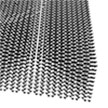 When two or more 2D materials are placed on top of each other their properties change and a material with novel hybrid properties emerges. These materials are called van der Waals heterostructures. By stacking free-standing membranes under observation in an electron microscope, researchers have demonstrated almost arbitrary 3D structures by stacking atomically thin materials, similar to a 3D printing process, where each atomic layer can be chosen from the vast library of available 2D materials.
When two or more 2D materials are placed on top of each other their properties change and a material with novel hybrid properties emerges. These materials are called van der Waals heterostructures. By stacking free-standing membranes under observation in an electron microscope, researchers have demonstrated almost arbitrary 3D structures by stacking atomically thin materials, similar to a 3D printing process, where each atomic layer can be chosen from the vast library of available 2D materials.
Feb 7th, 2022
 Conventional skin electronics are fixed designs that lack consideration for the individual characteristics of the wearer as well as the ability to actively adapt to various user specifications. In order to manage different sensor specifications and body impedances, design adjustments are inevitable during fabrication of these devices. To address this issue, researchers have developed a real-time fabrication platform that can adapt to arbitrary environments by freely drawing or erasing paths in a printed circuit.
Conventional skin electronics are fixed designs that lack consideration for the individual characteristics of the wearer as well as the ability to actively adapt to various user specifications. In order to manage different sensor specifications and body impedances, design adjustments are inevitable during fabrication of these devices. To address this issue, researchers have developed a real-time fabrication platform that can adapt to arbitrary environments by freely drawing or erasing paths in a printed circuit.
Feb 3rd, 2022
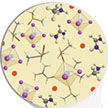 Scientists have demonstrated a technique for producing perovskite photovoltaic materials on an industrial scale, which will reduce the cost and improve the performance of mass-produced perovskite solar cells. The technique, which uses spin coating by designing a co-solvent dilution strategy, is low-cost, simple, energy-efficient, and should pave the way for creating perovskite solar cells. This work demonstrates that these existing technologies could be used to create perovskite solar cells.
Scientists have demonstrated a technique for producing perovskite photovoltaic materials on an industrial scale, which will reduce the cost and improve the performance of mass-produced perovskite solar cells. The technique, which uses spin coating by designing a co-solvent dilution strategy, is low-cost, simple, energy-efficient, and should pave the way for creating perovskite solar cells. This work demonstrates that these existing technologies could be used to create perovskite solar cells.
Jan 31st, 2022
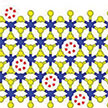 This review summarizes the current industrial graphene synthetic and analytical methods, as well as recent academic advancements in larger-scale or sustainable synthesis of graphene. Specific emphasis is placed on recent research in the use of flash Joule heating as a rapid, efficient, and scalable method to produce graphene and other 2D nanomaterials. Challenges and opportunities in the larger-scale synthesis of graphene and a perspective on the broader use of flash Joule heating for larger-scale 2D materials synthesis are discussed.
This review summarizes the current industrial graphene synthetic and analytical methods, as well as recent academic advancements in larger-scale or sustainable synthesis of graphene. Specific emphasis is placed on recent research in the use of flash Joule heating as a rapid, efficient, and scalable method to produce graphene and other 2D nanomaterials. Challenges and opportunities in the larger-scale synthesis of graphene and a perspective on the broader use of flash Joule heating for larger-scale 2D materials synthesis are discussed.
Jan 19th, 2022
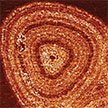 Many 2D materials with atomic-scale thicknesses suffer from oxidation and degradation effects under ambient conditions, which is one of the biggest obstacles in their practical applications. A 75-month study used atomic force microscopy to investigate the long-term evolution of oxidative defects on transition metal dichalcogenides (TMDs). Intriguingly, the researchers found that long-term storage in ambient conditions led to evolution of a distinct ring-like pattern resembling the tree-lines arising from seasonal changes.
Many 2D materials with atomic-scale thicknesses suffer from oxidation and degradation effects under ambient conditions, which is one of the biggest obstacles in their practical applications. A 75-month study used atomic force microscopy to investigate the long-term evolution of oxidative defects on transition metal dichalcogenides (TMDs). Intriguingly, the researchers found that long-term storage in ambient conditions led to evolution of a distinct ring-like pattern resembling the tree-lines arising from seasonal changes.
Nov 22nd, 2021
 Scanning probe lithography techniques rely on the use of cantilevers to pattern sub-100 nm structures generated by the mechanical contact between a cantilever tip and a surface. SPL, with its high resolution, is a popular method for prototyping nanoscale structures. Overcoming the current limitations of SPL - the lack of high-resolution, high-speed throughput at low cost - researchers developed a new technique they termed nanocalligraphy scanning probe lithography.
Scanning probe lithography techniques rely on the use of cantilevers to pattern sub-100 nm structures generated by the mechanical contact between a cantilever tip and a surface. SPL, with its high resolution, is a popular method for prototyping nanoscale structures. Overcoming the current limitations of SPL - the lack of high-resolution, high-speed throughput at low cost - researchers developed a new technique they termed nanocalligraphy scanning probe lithography.
Oct 28th, 2021
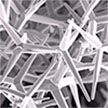 Researchers have developed an antiviral dressing material with visible-light-activated sterilizing properties that enables physical and chemical protection against viral agents like Herpes simplex. They re-engineered a common additive agent found in sunscreen (zinc oxide) to be self-sterilizing within a non-woven fibrous mats for herpes virus treatment. The self-sterilizing function creates a 'green' associated oxidant hydrogen peroxide (hydrogen peroxide), capable of eliminating harmful bacteria and viruses.
Researchers have developed an antiviral dressing material with visible-light-activated sterilizing properties that enables physical and chemical protection against viral agents like Herpes simplex. They re-engineered a common additive agent found in sunscreen (zinc oxide) to be self-sterilizing within a non-woven fibrous mats for herpes virus treatment. The self-sterilizing function creates a 'green' associated oxidant hydrogen peroxide (hydrogen peroxide), capable of eliminating harmful bacteria and viruses.
Oct 12th, 2021
 Polymer dielectrics are widely used as an insulating material in advanced electronics and electric power systems that require operation at high temperatures and high breakdown conditions. The miniaturization and higher power of modern electronics generate lots of heat, which needs to be dissipated quickly to avoid device malfunction or breakdown. This increased heat also leads to the temperature rise of insulating materials, which gradually causes the loss of dielectric performance. To address this, researchers report a new strategy to achieve high thermal conductive electric insulator polyethylene with high dielectric constant and strength.
Polymer dielectrics are widely used as an insulating material in advanced electronics and electric power systems that require operation at high temperatures and high breakdown conditions. The miniaturization and higher power of modern electronics generate lots of heat, which needs to be dissipated quickly to avoid device malfunction or breakdown. This increased heat also leads to the temperature rise of insulating materials, which gradually causes the loss of dielectric performance. To address this, researchers report a new strategy to achieve high thermal conductive electric insulator polyethylene with high dielectric constant and strength.
Sep 30th, 2021
 When two or more 2D materials are placed on top of each other their properties change and a material with novel hybrid properties emerges. These materials are called van der Waals heterostructures. By stacking free-standing membranes under observation in an electron microscope, researchers have demonstrated almost arbitrary 3D structures by stacking atomically thin materials, similar to a 3D printing process, where each atomic layer can be chosen from the vast library of available 2D materials.
When two or more 2D materials are placed on top of each other their properties change and a material with novel hybrid properties emerges. These materials are called van der Waals heterostructures. By stacking free-standing membranes under observation in an electron microscope, researchers have demonstrated almost arbitrary 3D structures by stacking atomically thin materials, similar to a 3D printing process, where each atomic layer can be chosen from the vast library of available 2D materials.
 Subscribe to our Nanotechnology Spotlight feed
Subscribe to our Nanotechnology Spotlight feed





